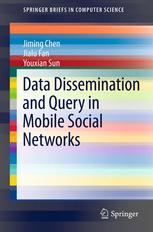

Most ebook files are in PDF format, so you can easily read them using various software such as Foxit Reader or directly on the Google Chrome browser.
Some ebook files are released by publishers in other formats such as .awz, .mobi, .epub, .fb2, etc. You may need to install specific software to read these formats on mobile/PC, such as Calibre.
Please read the tutorial at this link: https://ebookbell.com/faq
We offer FREE conversion to the popular formats you request; however, this may take some time. Therefore, right after payment, please email us, and we will try to provide the service as quickly as possible.
For some exceptional file formats or broken links (if any), please refrain from opening any disputes. Instead, email us first, and we will try to assist within a maximum of 6 hours.
EbookBell Team

5.0
28 reviewsWith the increasing popularization of personal hand-held mobile devices, more people use them to establish network connectivity and to query and share data among themselves in the absence of network infrastructure, creating mobile social networks (MSNet). Since users are only intermittently connected to MSNets, user mobility should be exploited to bridge network partitions and forward data. Currently, data route/forward approaches for such intermittently connected networks are commonly "store-carry-and-forward" schemes, which exploit the physical user movements to carry data around the network and overcome path disconnection. And since the source and destination may be far away from each other, the delay for the destination to receive the data from the source may be long. MSNets can be viewed as one type of socially-aware delay tolerant networks (DTNs). Observed from social networks, the contact frequencies are probably different between two friends and two strangers, and this difference should be taken into consideration when designing data dissemination and query schemes in MSNets. In this book, the fundamental concepts of MSNets are introduced including the background, key features and potential applications of MSNets, while also presenting research topics, such as, MSNets as realistic social contact traces and user mobility models. Because the ultimate goal is to establish networks that allow mobile users to quickly and efficiently access interesting information, particular attention is paid to data dissemination and query schemes in subsequent sections. Combined with geography information, the concepts of community and centrality are employed from a social network perspective to propose several data dissemination and query schemes, and further use real social contact traces to evaluate their performance, demonstrating that such schemes achieve better performance when exploiting more social relationships between users.